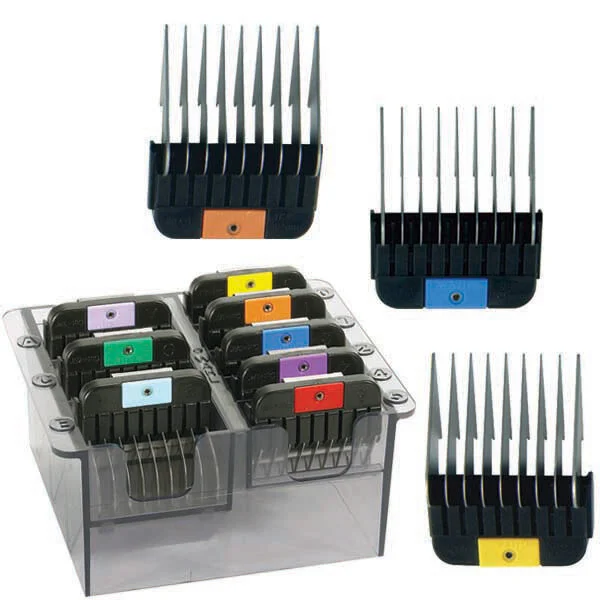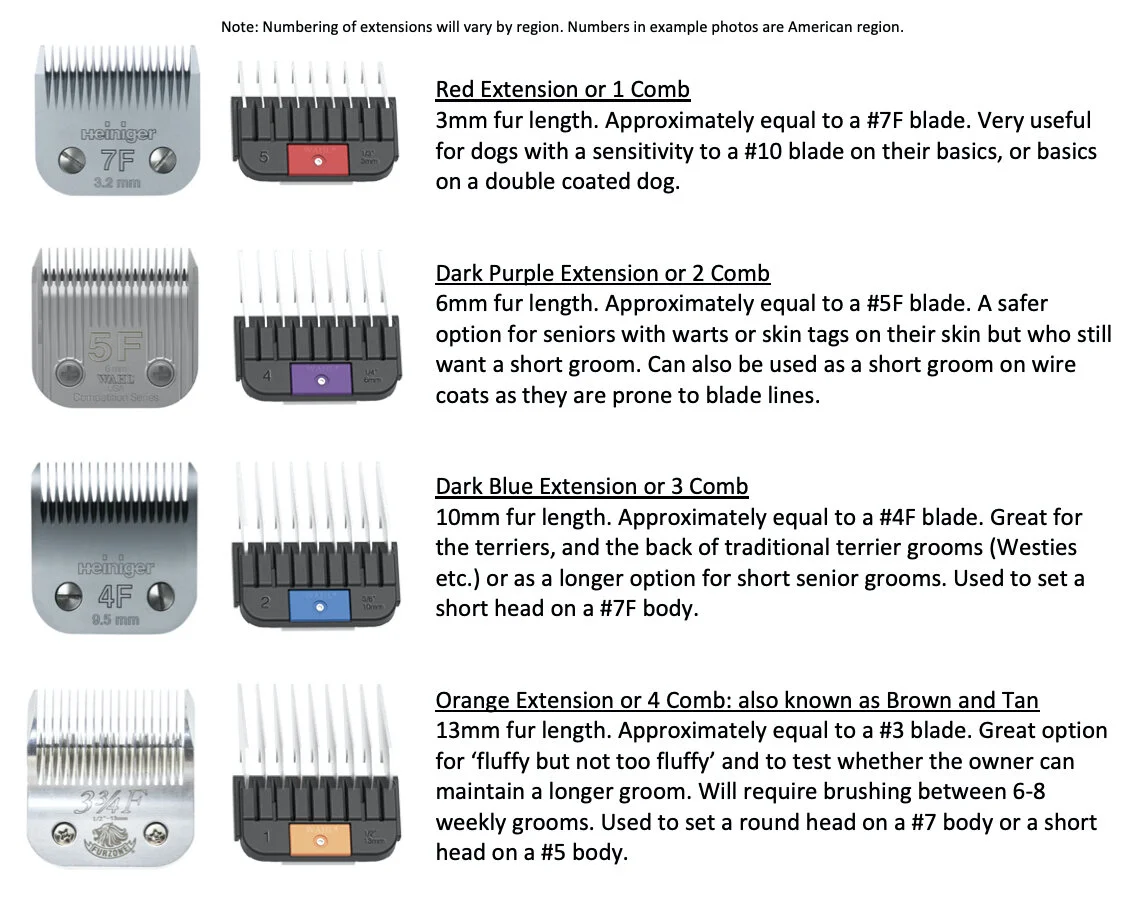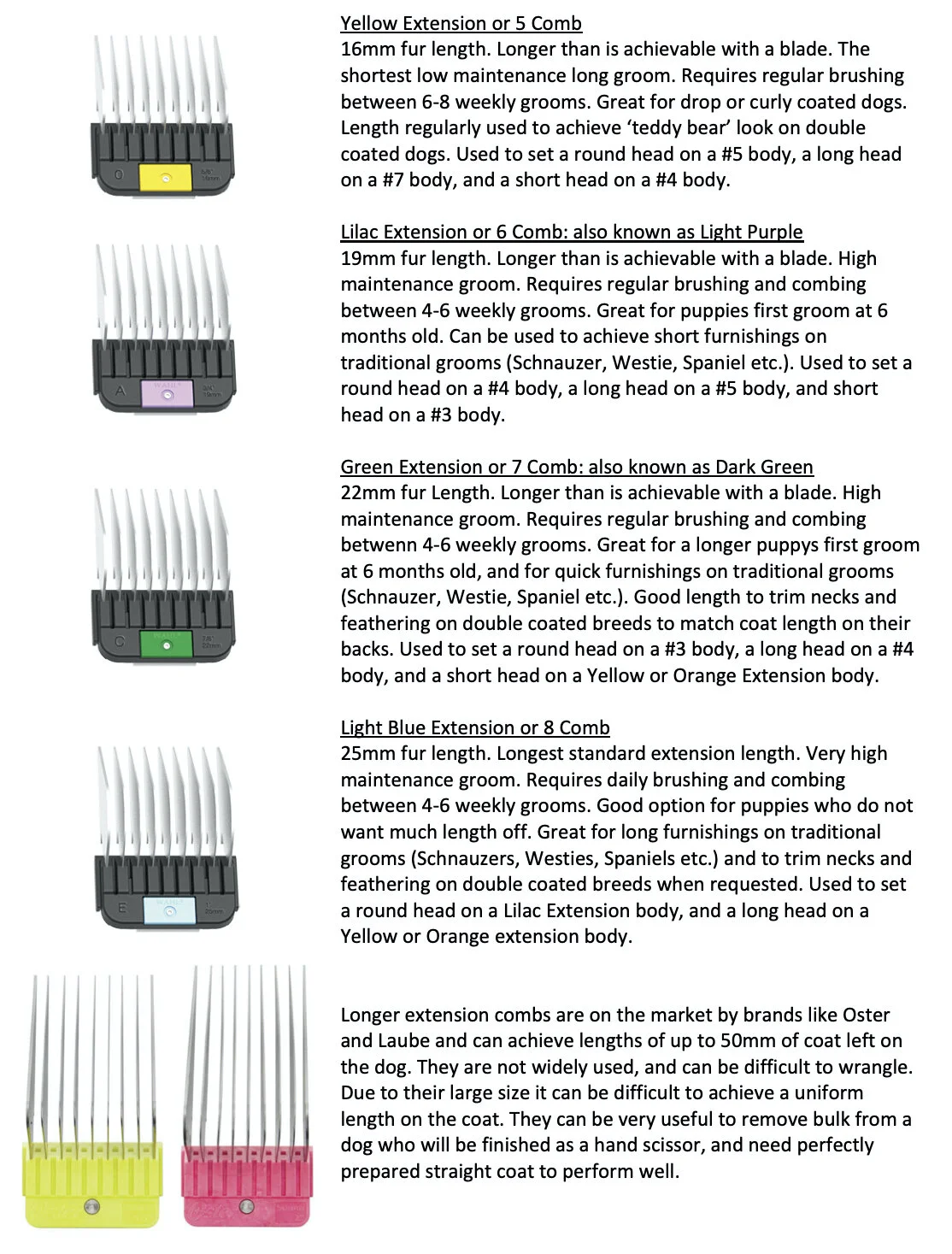
ADVANCED TECHNIQUES
Understanding Extension Combs
What do you do if a client requests a groom longer than your #3F blade? One option is to completely hand scissor their dog - but that creates a lot more work for both you and the dog, and may not be possible depending on their behaviour. The most common option is to use a snap-on extension comb to complete your groom.
What are extension combs?
Extension combs are either plastic or metal attachments for your blade that allow you to cut hair differently or longer than is possible with a standard blade. We find the best blade to use under an extension comb is a #30 blade, but it is possible to use a #9, #10 or #15 blade underneath if a #30 is not available. There are also extension comb sets to fit onto 5-in-1 and 4-in-1 trimmers.
When should I use an extension comb?
Primarily, extension combs are used when you want to provide a groom that is longer than is possible using a blade. If an client is asking for a length that is longer than 1cm - an extension comb is what you should be reaching for.
We also commonly use extension combs on both senior dogs and puppies, as they have less contact with the skin and can be less stimulating for the dog. A longer length is generally desirable on a senior dog to preserve fur if they are suffering from age-related hair loss, and in puppies to keep them looking cute and fluffy - but still maintainable.
In seniors, the other reason we use extensions is to avoid causing injury to any warts or other skin tags and growths they may have. Because extensions have wide set thin teeth, they are less likely to catch the edge of a growth and cause it to begin bleeding, or cause other injury to it.
On most dogs with a 'cute', 'round' or 'teddy bear' head, we use an appropriate size extension to 'set' our length on the head in order to keep our groom neat and proportionate. This saves us the time that would be needed to completely hand scissor a head.
Before using an extension comb, you need to make sure that you have perfectly prepared your dogs coat. Because the extension has much wider set teeth than a blade, it cannot raise hair up to feed it into the cutter. It relies on your preparation of the coat being perfectly straight and standing out from the body to achieve an even length all over.
You should never use an extension comb on a matted coat, or a coat that contains a large amount of undercoat. The long teeth will not be able to fit under the matting or undercoat, and will pull or get stuck on the hair - causing pain and discomfort to the dog.
If you are rough with your extension comb or it gets caught on a knot - it can pop off your blade and you will be left with the length of the blade underneath on your dog.
See exactly how the extension comb works to extend the blade length
How do I know which extension comb to use?
Knowing the approximate lengths of each extension and which blades they can be compared to will help with choosing which one you should use on a dog. You will find that most of the time the extension will leave the coat slightly longer than the blade - due to the different mechanisms they use to cut. Where the blade raises the fur up from the skin and feeds it into the cutter, the extension cuts the fur as it sits on the body.
When choosing any length to use for your groom (especially a long length) it is important to remember that you can always take the groom shorter. It is however, very difficult to make hair longer after it has been cut. If you are having trouble deciding which extension to use - start with the longest and work your way down if needed. You may find you need to use slightly different lengths on different body parts to achieve the look you want, or use both an extension comb and a blade.
Safety and Maintenance
While using an extension is generally considered to be quite safe, it is still possible to injure a dog or take hair shorter than you meant to while using one. The long points of extensions can be quite sharp, and poking skin or an eye with force can cause damage to the dog. The wide set teeth also mean is is quite easy for ears, tails and legs to slip through and be taken down to the length of the blade you have underneath your comb. The simple act of going over warts or scabbed over wounds can even cause bleeding and small injuries to occur. Be mindful of your pressure when using an extension comb, and what might be under the hair you are trying to cut.
If you have not seated your extension correctly on your blade, it can cause damage to your blade, breaking teeth, as well as distressing your dog with the loud noise it makes. It is recommended to never use a #40 blade under your extensions, as they tend to be narrower than other blades and can break teeth due to the misalignment.
Keeping your extension combs clean is just as important as keeping your blades and other tools clean. Regular hygiene and disinfection protocols make it easy to ensure there is no cross-contamination between dogs occurring, and that bacterial or fungal growth is kept from blooming on your extensions. There are a number of ways to clean extensions, ranging from the basic brushing off with a toothbrush and spraying with 70% isoproyl alcohol - all the way up to running them through a dishwasher cycle!









